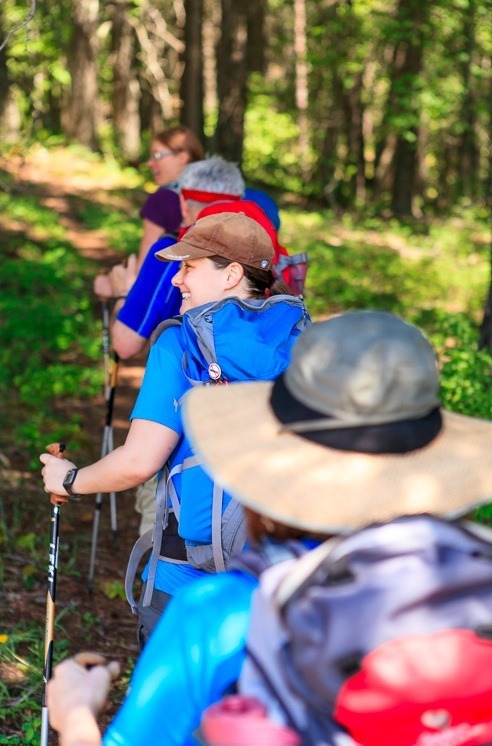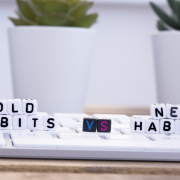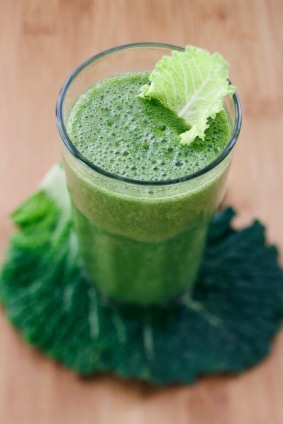Electrolytes: Myth-busted!
 This past week one of our alumni, Mary, wrote on Mountain Trek Facebook’s wall, “Can you post info on when to use electrolytes? I wish I had taken better notes during that lecture!”
This past week one of our alumni, Mary, wrote on Mountain Trek Facebook’s wall, “Can you post info on when to use electrolytes? I wish I had taken better notes during that lecture!”
Mary is refering to one of the many different lectures our guides deliver during the Mountain Trek program. Topics include “Nutrition,” “Sleep,” and “Stress,” among others. Also, during the morning meal Kirkland or Cathy usually discuss various subjects, including electrolytes.
Because of the fact guests work out approximately 6 to 8 hours a day, and relax in saunas and on massage tables in the evenings while at Mountain Trek, staff are always conscience of people’s energy levels and hydration. Here are five quick myths that guests learn about electrolytes and ones that every active person should know.
1. Gatorade is a great source for electrolytes – FALSE
Advertisers market Powerade and Gatorade as essential for hard-working, professional athletes but the fact is drinks such as these are full of sugar and artificial sweeteners and are more harmful than anything. At Mountain Trek we prefer to use Vega Sport Electrolyte Hydrator – a natural, alkaline-forming drink mix that is free from sugar and sweeteners. It has 11% potassium per 400g and 4% sodium per 100g.
2. I should consume electrolytes before and/or during every workout – FALSE
Electrolyte needs vary from person to person and depend on a variety of factors including body size and fitness level. At Mountain Trek, the guides may consume electrolytes once every two weeks but guests usually get them twice a week or more because of all the sweating and detoxing that’s done during workouts and sauna sessions. However, consuming too many electrolyte supplements overloads the body with sodium and does more harm than good.
3. I should only consume electrolytes when my muscles cramp – FALSE
Although there are some different thoughts about what causes cramping, most scientists agree it’s a body’s warning sign that you’re getting dangerously low on fluids and electrolytes. By then it’s too late to doing anything immediate, however, because cramping means the damage is already done and it’ll take time for the electrolytes to be absorbed again. Each body is different so you’ll have to be aware of your energy levels at all times and react accordingly but a general rule of thumb is if you start to experience ringing in your ears or are mild heart palpitations immediately stop what you’re doing and consume a serving of electrolyte. (In those cases your body requires sodium.) if you feel your muscles may start to cramp or your energy is starting to flat-line then you also need an electrolyte (because your potassium stores are depleted.) In each case, consume a glass of water with an electrolyte supplement dissolved in it and continue to hydrate. And remember that next time you perform a similar workout you will need to prepare accordingly.
4. Salt pills are sufficient right? – FALSE
Salt tablets are an unacceptable choice for electrolyte replenishment because they only supply two of the electrolytes your body requires (sodium and chloride) and they can oversupply sodium, thereby causing further damage. Again, stick to a natural, sugar-free electrolyte supplement such as Vega Sport.
5. It will require time and practice to dial in my electrolyte requirements – TRUE
There isn’t an easy answer when it comes to electrolyte consumption. To use a metaphor, electrolytes are like the oil in a car: they’re not the fuel that makes you go, but they’re essential in keeping the engine working properly. And, similar to the oil tank in your car, you don’t want it to ever be empty, nor do you want it over full. The key is to always have electrolytes on hand and to monitor your pre-, during, and post-workout habits. If you have a long sauna session one night and then work out for two hours the next day and start to feel a leg cramp coming on, then you’ll know the next time you do something similar to include an electrolyte supplement at breakfast, a few hours before your workout.











Please speak more on Potasium.